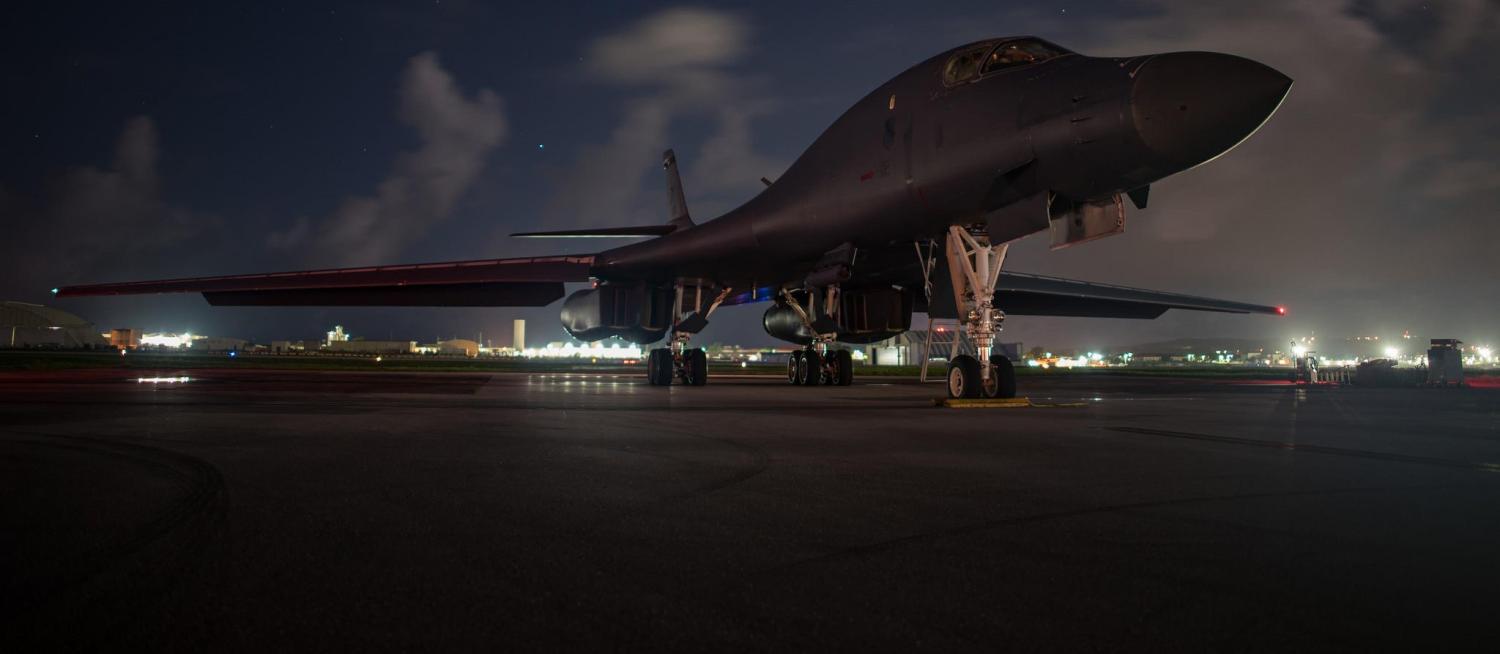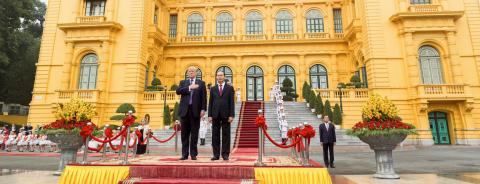North Korea has the strategic initiative. Its plan to build a nuclear armed, long-range missile force is nearing completion. Other countries can do little – with China's ongoing support, sanctions can be evaded and UN resolutions ignored.
Accordingly, many commentators now argue that the Trump administration's angst will lead nowhere. Instead, a DPRK nuclear rocket force is inevitable, with deterrence the best policy in response, perhaps including anti-missile systems (one should be careful not to exaggerate the effectiveness of anti-missile systems in time of war, however).
There is much to commend this approach. Doing nothing does seem less risky. Moreover, the DPRK's nuclear force may be at best boutique. The country's intentions, at least at the moment, seems to be building a small road-mobile force equipped with several long-range liquid-fuel rockets armed with relatively low-yield nuclear warheads. This appears, at best, a rather minimal deterrent force. There are doubts a road-mobile liquid rocket is even sensible – being somewhat unreliable and inherently unsafe, this technology is not used by any other country.
On the other hand, the threat that, say, a 20 kiloton weapon (tested by the DPRK in 2016) may possibly strike Honolulu in some future nightmare scenario may well successfully constrain US actions in future Korean peninsula crises. Such a bomb might kill 65,000 and injure 110,000 more. A tiny DPRK force may be enough. Such a line of thought perhaps supports those who see the current US-DPRK stand-off as being as dangerous as the Cuban Missile Crisis – a rather worrying prospect.
Channelling John Lennon then, let's imagine that the US and its allies were determined to prevent North Korea achieving its nuclear force ambitions. What could be done?
The conventional options have been tried. Sanctions, diplomacy and military threats have all been employed and found ineffective. Some advocate repeating these earlier efforts, but that seems pointless. But there are a few other alternatives that might impose pain on North Korea and its long-term protector, China. Without pain, why would either nation reconsider the path they are on?
The US shared thermonuclear weapons with Germany, Belgium, Italy, the Netherlands and Turkey, as part of a NATO deal struck in the 1960s. The logic was to give Europe a means to defend itself when technological developments meant the US homeland became within range of Soviet long-range missiles. Without sharing, it was feared the US would not risk nuclear attack in a crisis and so the Soviets could drive a wedge in the US-Europe alliance. That scenario is playing itself out again in Asia. Japan and South Korea might be left isolated if North Korea can blackmail US out of providing military assistance in time of crisis because of fear of nuclear attack.
Sharing US nuclear weapons with Japan and South Korea would frighten China. China is already worried about America's deployment of a single THAAD anti-missile defence battery to South Korea. Instituting a nuclear weapons sharing program would mean continued North Korean belligerence would seriously damage China's security. Such sharing does not need to actually happen – it only needs to be threatened, unless China changes North Korean thinking. There are, however, numerous objections to this idea, not least the inevitable Japanese domestic opposition.
Even so, such an idea perhaps raises questions about Chinese nuclear thinking. China has aided and abetted the development by Pakistan and the DPRK of their respective nuclear weapons forces. Both are at least quasi-allies of China – the DPRK is at least legally one and Pakistan sees China as its only all-weather friend. Pakistan's force is developed to counter India, while the DPRK can presently counter South Korea and Japan, and perhaps, in time, threaten the US. In a time of crisis could Pakistan and/or the DPRK act as a China-proxy nuclear force to threaten US allies and friends? Is proxy nuclear war possible? Some would argue that China cannot easily manipulate Pakistan or the DPRK, but the prospect of all three acting together in a time of crisis would dramatically raise the stakes and greatly complicate US nuclear planning and responses. China has effectively already undertaken nuclear sharing.
A second alternative is to go hard on China's proposal to freeze North Korea's nuclear program in exchange for suspending large scale US-South Korean military exercises. This could be agreed to as long as North Korea surrenders its current twenty or so nuclear weapons and destroys its long-range missiles. As part of the bargain, intrusive inspections and unconstrained reconnaissance overflights could be mandated. There is a recent precedent to show such disarmament works – Iraq was disarmed in the 1990s, as the 2003 occupation revealed. This is an option that gives China a big win in scaling back the US-South Korea alliance but also significantly improves regional stability.
A third option is more ticklish. Regime change has had a bad name since the 2003 Iraq War, but there are other approaches. Kim Jong-un is less the head of the North Korean Workers' Party of Korea than an absolute monarch. Indeed, the Party mandates only the Kim dynasty can rule. But kings can be overthrown from within. Palace coups have a long history.
External countries can begin a campaign to persuade the North Korean people and its elites to change leaders. This is not seeking regime change in the sense that the Party falls but rather simply that Kim Jong-un falls. The incentive for Kim Jong-un is that the external actions to have him overthrown from within will only cease if the nuclear program is abandoned. At the moment he believes getting nuclear weapons will ensure his survival. The trick is to convince him that getting nuclear weapons will doom him – and he must stop now.
There are many means external nations can use to reach the North Korean populace, ranging from TV and radio broadcasts to using high-flying drones to drop leaflets across the country. The point is not necessarily to succeed, as much as convince Kim Jong-un that the plan could.
Regimes such as North Korea are inherently paranoid (as Kim murdering his brother aptly illustrates). An external program can simply continue to nominate various members of the elite as future potential leaders to create significant ongoing internal distrust and uncertainty. This regime change approach utilises the intrinsic paranoia of Kim and his close supporters. China arguably has such a scheme in place, as their hosting Kim's brother in Beijing suggests.
Importantly, this is not bringing democracy to the benighted people of North Korea. The DPRK has is manifestly evil but China is assumed to be strongly opposed to its neighbour falling.
These alternatives would worry North Korea and China. They would be best employed simultaneously, to present North Korea and China with a broad range of difficult problems and so gain the strategic initiative. North Korea's plan is nearing completion – if the fruition of this plan really is not desired, action needs to be taken now.

